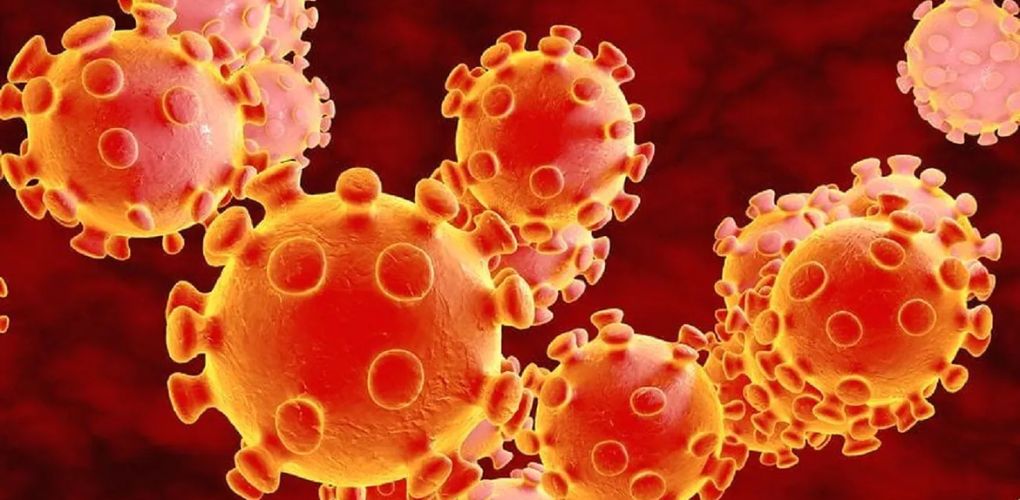What Level of Eosinophils Indicate Cancer?
Eosinophils condition causes the body to produce an abnormally large number of white blood cells (eosinophils), which aid in infection protection. These elevated levels suggest that the patient reacts to an allergen, parasite, or substances produced by cancer cells associated with Hodgkin lymphoma and chronic myeloid leukaemia. Even with the normal condition, you may wonder what level of eosinophils indicate cancer.
In this article, we will explore the connection between eosinophils and cancer, and answer the question, “What level of eosinophils indicate cancer?” and which treatment is available.
Table of Contents
- 1 The Link Between Eosinophilia and Cancer
- 2 Types of Eosinophilia cancer
- 3 What Level of Eosinophils Indicate Cancer?
- 4 What are the symptoms when the Eosinophils count increases?
- 5 What causes eosinophilic leukaemia?
- 6 Symptoms of Eosinophilia
- 7 Diagnosis and Treatment of Eosinophilia
- 8 What does Eosinophil Count indicate Cancer?
- 9 What should you do if your Eosinophilia count is high?
- 10 Conclusion
- 11 FAQs:
The Link Between Eosinophilia and Cancer
The presence of eosinophilia in cancer patients has been studied extensively. According to research, up to 10% of cancer patients may have eosinophilia. Eosinophilia is most commonly associated with certain types of cancer, including Hodgkin’s lymphoma, non-Hodgkin’s lymphoma, and some solid tumors.
Eosinophilia is thought to be a result of the body’s immune response to cancer cells. Cancer cells release chemicals that attract eosinophils to the site of the tumor, leading to an increase in eosinophil count. However, the exact mechanism behind this is not yet fully understood.
Types of Eosinophilia cancer
- Eosinophilia-Associated Cancer (EAC), a type of eosinophilic leukaemia, starts in the bone marrow. It’s not yet fully understood what causes EAC, but it’s thought to be related to abnormalities in the immune system. In some cases, EAC can develop into other disorders such as granulosa cell tumour (GCT) or common variable immunodeficiency disorder (CVID).
- Eosinophilia-Associated Disease (EAD) is the umbrella term for many uncommon disorders that occur due to eosinophil activation and overzealous inflammation. Eosinophil-associated disorders are classified into three main classes of diseases.
- Granulomatous Disorders (also called GHDs) occur due to eosinophil apoptosis which causes granulomas. Granulomas comprise many cells, including lymphocytes (B lymphocytes, T cells), eosinophils, and plasma cells (as in Wegener’s granulomatosis).
What Level of Eosinophils Indicate Cancer?
While eosinophilia is commonly observed in cancer patients, there is no specific level of eosinophils that indicates the presence of cancer. The level of eosinophils in cancer patients can vary widely depending on the type and stage of cancer.
However, studies have shown that eosinophilia is more commonly observed in advanced stages of cancer, indicating that a higher level of eosinophils may be associated with a more advanced stage of cancer.
Other Factors that Can Cause Eosinophilia
Eosinophilia can be caused by a variety of factors other than cancer, including:
- Allergies: Allergic reactions to certain foods, medications, or environmental factors can lead to eosinophilia.
- Parasitic Infections: Parasitic infections, such as those caused by roundworms or tapeworms, can cause eosinophilia.
- Autoimmune Disorders
What are the symptoms when the Eosinophils count increases?
Increased Eosinophil count is an indication of an allergic reaction or the presence of parasites.
- Regarding allergies, symptoms include a runny nose, sneezing, and other effects such as wheezing and asthma.
- In addition, contracting a parasite often found in tropical climates like Africa and Southeast Asia may lead to abdominal pain or diarrhoea.
- Many things, including asthma, allergy, skin diseases, and parasitic infections, could cause an increase in eosinophil blood count.
- For example, suppose one has allergies to certain foods or substances. In that case, there may be symptoms such as itching the throat or nose, sores, and hives—fares. You may experience these conditions due to allergic reactions, including shellfish, peanuts, milk, and other dairy products.
What causes eosinophilic leukaemia?
Eosinophil leukemic cells typically have a high number of eosinophils in the bone marrow, which is an indication that the disease is caused by the over-production of these cells. These cells are white blood cells that defend themselves by releasing histamines, making them a potentially hazardous form of cancer for its sufferers. The cancer is most often diagnosed in middle-aged adults and can be fatal if left untreated as it will quickly spread to other internal organs such as the lungs and spleen.
A person suffering from eosinophilic leukaemia will have a high number of eosinophils in their bone marrow. These cells are, by nature, a potentially hazardous form of cancer for its sufferers. Cancer is most often diagnosed in middle-aged adults. Unlike many other forms of leukaemia, the disease can spread to other internal organs such as the lungs and spleen.
Symptoms of Eosinophilia
In many cases, eosinophilia may not cause any symptoms and may be discovered incidentally during routine blood tests. However, in some cases, eosinophilia can cause symptoms such as:
- Fatigue
- Fever
- Skin rashes
- Muscle pain
- Joint pain
- Shortness of breath
- Coughing
- Abdominal pain
- Diarrhea
Diagnosis and Treatment of Eosinophilia
If you have an abnormal eosinophil count, your doctor may order additional tests to determine the underlying cause of eosinophilia. These tests may include:
- Imaging tests, such as X-rays, CT scans, or MRI scans, to look for signs of cancer or other abnormalities.
- Allergy tests, to determine if your eosinophilia is caused by an allergic reaction.
- Blood tests, to check for signs of infection or autoimmune disorders.
The treatment of eosinophilia depends on the underlying cause.
- If eosinophilia is caused by an allergic reaction, your doctor may prescribe antihistamines or other medications to relieve your symptoms.
- If eosinophilia is caused by a parasitic infection, your doctor may prescribe antiparasitic medications.
- If eosinophilia is caused by cancer, your treatment will depend on the type and stage of cancer.
- Treatment options for cancer may include chemotherapy, radiation therapy, surgery, or a combination of these treatments.
What does Eosinophil Count indicate Cancer?
High eosinophil counts can indicate Cancer (colon or lung), certain infections, and other health problems. High levels of eosinophilia are classified as mild (500 to 1,500 per microliter, ml, of blood), moderate (1,500 to 5,000 per ml), or severe (5,000 or more per ml).
- Bone marrow produces white blood cells. They are a component of the innate immune system and can “non-specifically” eliminate pathogens or parasites entering the body.
- In the case of Hodgkin lymphoma and chronic myeloid leukaemia, eosinophilia is usually accompanied by an elevated number of other kinds of white blood cells, including basophils and neutrophils.
- Other infections characterised by high levels of eosinophilia include allergies (e.g., atopic dermatitis and hay fever) and parasitic infections. Eosinophilic leukaemia is a rare, aggressive form that affects less than 1% of patients with the disease.
- Eosinophil counts above 3,000 cells per microliter (ml) of blood indicate this condition. It is cancer in which eosinophil cells abnormally multiply and it releases into the bloodstream. Further, it may happen that patients suffer from side effects and intrusions.
Also Know: Can last-stage cancer be cured?
What should you do if your Eosinophilia count is high?
A complete blood count is used to determine the presence of eosinophilic leukaemia (CBC). A CBC counts the many cell types present in an individual’s blood. Eosinophilic leukaemia is suspected when the blood has a high eosinophil count.
- Aspiration and biopsy of bone marrow these two procedures are similar and are frequently performed concurrently to examine the bone marrow. Bone marrow is composed of both solid and liquid components. A needle is used to remove a fluid sample from the bone marrow. A needle biopsy of bone marrow removes a small amount of solid tissue.
- After that, a pathologist looks at the sample(s) to identify the quantity and kind of aberrant cells. A pathologist is a medical professional who analyzes lab results and assesses cells, tissues, and organs to determine diseases. Bone marrow aspiration and biopsy frequently occur around the hip, lower back, and pelvic bone.
- A high number of immature cells in the bone marrow, known as blasts, indicates acute rather than chronic eosinophilic leukaemia.
Conclusion
One can measure the eosinophils in the blood of a healthy person but may also indicate the presence of certain cancer, autoimmune diseases, allergies, and parasitic infections. Eosinophilia is a sign of many disorders, including allergies and parasitic infections. Cancer cells in eosinophil-associated cancers can result in a high Eosinophil Blood Count. However, not all people with a high Eosinophil Blood Count have Cancer. Cancer can also be present without a high Eosinophil Blood Count.
There are certain diseases that associate directly with eosinophilia. For example, one can have an elevated eosinophil count without Cancer, even with Cancer. The amorphous nature of eosinophilia makes it challenging to know exactly what causes it, which makes it hard to prevent and treat. For example, vaccines against parasitic infections prevent eosinophilia in some cases. So, here you came to know about what level of eosinophils indicate cancer and related information.
FAQs:
Can eosinophilia be a sign of leukemia?
Can eosinophilia be caused by stress?
Can eosinophilia be cured?
What level of eosinophils indicates cancer?
Can high eosinophil levels be a sign of cancer?
Can cancer cause low eosinophil levels?
Cancer-related popular searches:
What is tnm staging of Oral Cancer?
Exercises for Cancer Patients?





1 Comment
Hi, Neat post. There’s an issue together with your site in web explorer, may check this?K IE still is the market chief and a good component to other people will leave out your fantastic writing due to this problem.